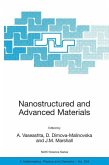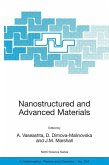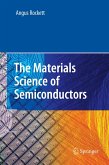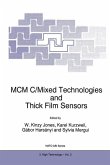This excellent volume covers a range of materials used for flexible electronics, including semiconductors, dielectrics, and metals. The functional integration of these different materials is treated as well. Fundamental issues for both organic and inorganic materials systems are included. A corresponding overview of technological applications, based on each materials system, is presented to give both the non-specialist and the researcher in the field relevant information on the status of the flexible electronics area.
Flexible-electronics is rapidly finding many main-stream applications where low-cost, ruggedness, light weight, unconventional form factors and ease of manufacturability are just some of the important advantages over their conventional rigid-substrate counterparts. Flexible Electronics: Materials and Applications surveys the materials systems and processes that are used to fabricate devices that can be employed in a wide variety of applications, including flexible flat-panel displays, medical image sensors, photovoltaics, and electronic paper. Materials discussed range from polymeric semiconductors to nanotube transparent conductors, highlighting the important characteristics of each system and their target applications. An overview of the performance benchmarks for the different materials is given in order to allow a direct comparison of these different technologies. Furthermore, the devices and processes most suitable for given applications in flexible electronics are identified.
Topics covered include:
An overview and history of flexible electronics
Novel materials for solution-processable thin-film electronic devices and their properties
Low-temperature processing of conventional materials and devices on plastic foils
Novel techniques, such as printing and roll-to-roll processing, for large-area flexible electronics manufacturing
Materials and device physics relevant to flexible electronics
Device integration on flexible substrates
Mechanical and electronic characteristics for thin-film transistors and nano-scale transparent conductors on flexible platforms
Applications towards flexible displays, sensors, actuators, solar energy, radio-frequency identification, and micro-electro-mechanical systems
Written by leading researchers in the field, Flexible Electronics: Materials and Applications serves as a reference for researchers, engineers, and students interested in the characteristics, capabilities, and limitations of these exciting materials and emerging applications.
Flexible-electronics is rapidly finding many main-stream applications where low-cost, ruggedness, light weight, unconventional form factors and ease of manufacturability are just some of the important advantages over their conventional rigid-substrate counterparts. Flexible Electronics: Materials and Applications surveys the materials systems and processes that are used to fabricate devices that can be employed in a wide variety of applications, including flexible flat-panel displays, medical image sensors, photovoltaics, and electronic paper. Materials discussed range from polymeric semiconductors to nanotube transparent conductors, highlighting the important characteristics of each system and their target applications. An overview of the performance benchmarks for the different materials is given in order to allow a direct comparison of these different technologies. Furthermore, the devices and processes most suitable for given applications in flexible electronics are identified.
Topics covered include:
An overview and history of flexible electronics
Novel materials for solution-processable thin-film electronic devices and their properties
Low-temperature processing of conventional materials and devices on plastic foils
Novel techniques, such as printing and roll-to-roll processing, for large-area flexible electronics manufacturing
Materials and device physics relevant to flexible electronics
Device integration on flexible substrates
Mechanical and electronic characteristics for thin-film transistors and nano-scale transparent conductors on flexible platforms
Applications towards flexible displays, sensors, actuators, solar energy, radio-frequency identification, and micro-electro-mechanical systems
Written by leading researchers in the field, Flexible Electronics: Materials and Applications serves as a reference for researchers, engineers, and students interested in the characteristics, capabilities, and limitations of these exciting materials and emerging applications.








